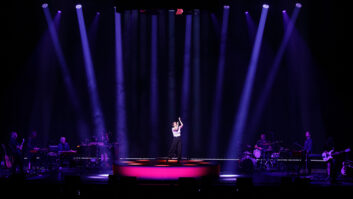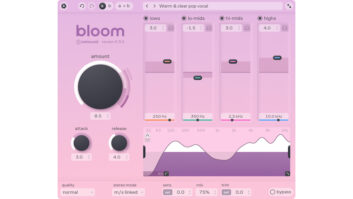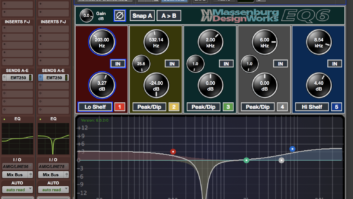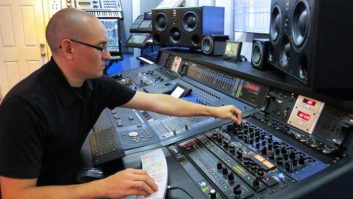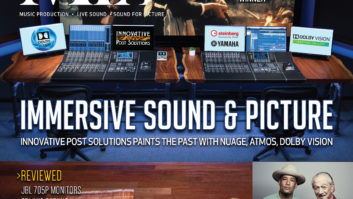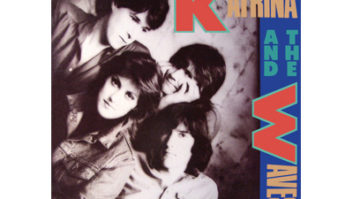Starting out as a one-man sound company, I found that growth meant you would eventually find yourself in a venue larger than your system could handle. I learned a lot of tricks along the way to safely run the system at its peak without blowing it up. One was to boost a low frequency (say 50 or 63 Hz) that sounded good in the room and pull down most of the other low frequencies. You still had a good thump, but were using less power. I also cut the lower range of each speaker component: 40 Hz down on the lows, cut at 160 to 200 on the mids and cut a little of the 800Hz to 1k area on the horns. That helped keep from pushing each component too much. I would sacrifice the lows in the kick a little. Cut a little more of the lows out of the vocals than I would normally. All of this reduced my overall signal with little noticeable loss in sound quality.
To keep from pushing my gains too much, I would route through a submaster, plus directly to the main out. This gave me more output with less gain at the input. With less gain, I was able to avoid clipping even though I was running hotter than I liked. I was using a modified Seck studio board and ran the outputs at +10 on those occasions. The crossover had to be set carefully, as well. All of the amps would be just bumping the protect lights. With the help of a little compression, I got away with this 10 or so times.
Then I started buying bigger amps.
—Ronald Smith
I am one of those guys who is perfectly comfortable mixing “in the box,” but occasionally I am sent something that really sounds “digital.” You know, the guitars are all recorded direct through some kind of pedal rig, the drums are from a sampler and everything is really thin and bright. When that happens, I push the mix through my Tube-Tech or ToneBuss summing amps, and I usually choose one to make everything sound more analog. However, I recently had one project that just would not cooperate. I liked certain sounds better through one summing amp or the other, and some better in the box. So I did all three! I ran the bass and drums through the Tube-Tech, which really rounds out the samples and the bass. The bass was also going through my ancient Altec compressor, which only has an on/off switch and a meter. All of the guitars were going through the ToneBuss, which is pretty close to a ’60s-era Neve console since it uses the same transformers. Everything else sounded fine in the box so I left it. I also ran the drum bus, minus cymbals, out into my cutting room and ran a stereo pair of Blue Woodpecker mics to add more room, and everything turned out great. Sort of the long way around, but whatever it takes!
—Randy Adams
Adamsound
www.adamsound.com
The client actually liked it best…
Although the project was coming out well, there had been a lot of tension about the budget and the tracking had taken longer than planned. Then during the mix, I discovered that, to my horror, on one song the snare track ended about a minute before the song did. There had been a glitch and the rest of the file was gone. I was working on a Roland VS-2480 and this had never happened before (or since). I knew that even if I could get the drummer back in to track it again, it would take all day to reproduce the setup to match the other songs and I would have to eat the cost (and it would put the project even further behind schedule).
I still had the track with the bottom mic so I tried to work with it but just couldn’t get a believable sound; it might have worked if it wasn’t heavy metal but this snare had to cut hard. So I pulled the top and bottom snare tracks into Cool Edit Pro and carefully replaced the missing snare hits using the first-half of the song for source material and matching the timing with the bottom track. After several hours of tedious work, I transferred the tracks back to the VS-2480 but the last part of the song still sounded different, so I tightened the gate and compressed until I could no longer hear the transition and then EQ’d and added ambience until I thought it was acceptable. (I didn’t actually like the snare sound but I felt I had done the best I could.)
When the band heard the mixes, they sent me an e-mail with some minor changes and noted how much they liked the snare sound on this song and asked me to make all the others sound the same. I wasn’t expecting that. Michael Wagener mastered the project (they should have had him mix it, but I guess I work for less!) and immediately picked up the odd snare sound and said he thought it was sampled—well, not exactly, but what great ears; guess that’s why he is where he is.
—Jim (The Reverb King) Brown
www.thereverbking.com
Columbia Records in New York, there were times when the drums were buried and I had to pull a snare backbeat out that wasn’t even there, or was almost there, to beef up the mix. In the ’60s, the mono mix was the thing, and several times it happened that a mix was perfect except for not having enough backbeat. And so I brought my snare drum from home and would set it up on top of a speaker with the snares very loose and facing up, and then I would put a mic on the top. I would EQ the mix to let as much backbeat as possible go through and then gated the signal to the speaker, EQ it some more and then bring it back into the mix.
The procedure also worked in the reverse with the speaker sitting on top of the drum and the snares more loose on the bottom. Sometimes I would have to ride each backbeat up throughout the song, record it to another track, gate it, ride it and mix it with the original. This also saved many a date when the recorded snare on a multitrack sucked, or was mixed on a track with other stuff and lacked any high-end snare crack. This was also the start of putting a mic on the bottom of the snare drum on the studio session and feeding it back with the phase turned around. Remember, there were no teachers nor recordings schools during those times and you constantly experimented and were on your own.
—Don Meehan
I was recently mixing with Latino/Christian rockers Bandera Blanca, when well into the analog final mix (console, outboard gear, the whole nine yards) the band reminded me the intro of the song was supposed to sound like you were hearing it “in the studio” until the drums kick in. This begged the question: What does “in the studio” sound like to the average listener—headphones, headphone leakage, talkback mic, open mic chatter, etc.—and how does one fake it when the complicated mix is nearly finished? For starters, we left a count-off in at the top, but much more was clearly required.
With no time to spare, I took a mult of my stereo mix, summed it to mono, got it unbalanced and down to about instrument level. I sent this into one of those little 9-volt powered guitar amps that’s built into a cigarette box (mine is Camel Lights) and worked its input level for minimal distortion. I placed this on the ledge of my studio’s glass and miked it up with a pair of old Electro-Voice omnidirectional dynamics (a PL9 and 635A) and clipped an old-school RCA BK-12A “lavalier” to the cig pack’s cover. I took these three tracks and recorded them along with the mix.
Later, I panned the omnis wide in stereo, delayed one a few milliseconds, time-corrected the lavalier, added a LPF to it and put it up the middle. A little crossfade where the intro meets the song and—voila!—instant studio vibe! The amp/mic combo’s lousy frequency response vaguely simulated both headphone leakage and a talkback mic, while the slap off the glass and room air from the omnis lended a lot of the realism. Even though it was largely mono, the difference between the hard-panned, mismatched mics and the irregularity of the comb filtering off the glass lent it all some randomness and attitude that a plug-in would be hard pressed to keep up with. What fun!
—Rob Tavaglione
Catalyst Recording
www.catalystrecording.com
This mixing isn’t actually radical so much as it is stretching the
collaboration concept.
I am mixing an album for a Turkish/Swiss producer involving three
European singers (Italian, Spanish and Turkish). The tracks were
recorded in Switzerland and then fully orchestrated and overdubbed by
the Czech Philharmonic Orchestra (103 musicians). Pretty normal, except that this huge project started at an SSL studio (Studio Relief in Belfaux, Switzerland) and is being mixed at my home studio using with a Pro Tools HD3 system running at 96 kHz, feeding 30 outputs into Inward Connections analog summing mixers. The signal is then converted back to digital and fed into the digital input of my audio computer.
So far, this is not so radical except for the fact that we are mixing
“live” while being 10,000 kilometers apart. The mix is streamed as a 48k MP3 stream at 320KB/sec/high-quality settings via Nicecast. I put “live” in quotes because there is at least a two-second delay between hitting Play in Los angeles and hearing music in Switzerland.
Here’s the “radical” part. I use Apple’s iChat on my laptop to connect with the producer in Switzerland. I then use screen sharing to take over his computer from my laptop. Once I have control of his laptop, I navigate on his computer to open screen sharing and then connect his laptop to my audio computer running Pro Tools. (I do it this way so that I can input the password to my audio computer without him knowing what it is.) He can now see my mix screen from my audio computer on his laptop. I close the screen sharing between our laptops and then re-establish a video iChat between us.
There are three computer events that happen simultaneously:
1. He sees and hears me using iChat Video conferencing.
2. He sees my Pro Tools screen from my audio computer on his laptop.
3. He hears the mix sent via Internet broadcasting (Nicecast) and
monitored by opening an Internet stream in iTunes on his laptop.
The album is currently called Aventia Crooners and is a “Three Tenors”–type of album with songs from movies from the past 50 years. I have also mixed an album this way for Jazz drummer Terri Lynn
Carrington, who lives in Boston.
Total cost (assuming you already have all the computers and hardware):
$40 (Nicecast, from Rogue Amoeba).
—Erik Zobler
